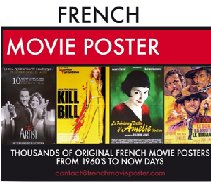| South
African Film History |
 |
South
Africa First in Film |
|
The first presentation of film in South Africa was
made in May 9, 1896 at the Empire Theatre of Varieties
in Johannesburg. An R. W. Paul camera and film program
was used.
——————————
The first film produced in South Africa were scenes taken
from the front of a tram in Johannesburg in 1896.
——————————
The first feature film over 1 hour
was De Voortrekkers in 1916.
——————————
The first 'talkie' in was Mocdertjie
in 1931.
——————————
|
Early
projection devices were shown around the Johannesburg goldfields
as early as 1896. The first cinema newsreels ever released were
filmed at the front during the Boer
War (1899-1902). The first narrative film was The Kimberley
Diamond Robbery, made in 1910.
Between
1916 and 1922, I. W. Schlesinger produced 43 feature films, themes
were primarily Boer and Britons unified hsowing civilization against
barbaric hordes (mostly from British authors like H Rider Haggard).
An astonishing accomplishment was the procural of 25 000 Zulu warrior
extras.
Production
declined after 1922 for, despite high technical standards, there was
very little interest in British and US markets. De Voortrekkers, however,
inspired The Covered Wagon (1923) in the USA. There have been remakes
of some films such as Zulu (1966) and Zulu dawn (1980) of the British-Zulu
Wars of 1879.
A
30 year lull was broken in the early 1950s by Jamie Uys,South Africa's
most commercially-successful director (Gods Must be Crazy) when he
succeeded in attracting Afrikaner-dominated capital to establish independent
production. He persuaded the government to provide a subsidy for the
making of local films, which continued until the late 1980s. It was
this subsidy which resulted in films supportive of the military such
as Kaptein Caprivi (1972), made while the South African Police supported
the white Rhodesian regime.
Most
films were made from outside directors in films like Zoltan Korda's
Cry the Beloved Country (1951 - based on Alan Paton's novel) and Lionel
Rogosin's Come Back Africa (1959), about the brutality of apartheid.
Euzhan Palcy's A Dry White Season (1989) and Richard Attenbourgh's
Cry Freedom (1987) were the first films to bring apartheid to mass
cinema audiences. Exiled Lionel Ngakane's Jemina and Johnny (1966)
and Vukani Awake (1964). Ngakane was an actor on Korda's version of
Cry the Beloved Country and as technical consultant on A Dry White
Season.
The
first black-made film was Gibsen Kente's How Long (must we suffer
...? (1976). It was shot in the Eastern Cape during the Soweto uprising.
How Long was briefly shown in the Transkei. Through abuse, the government
subsidys ended in the 1980s.
Black
director, Simon Sabela, employed by Heyns Films, however, injected
a degree of cultural authenticity into the films he made, such as
U-Deliwe (1975) but that ended in the 1980s.
The
years following 1986 saw the sustained development of a domestic anti-apartheid
cinema financed by capital looking for tax breaks and international
markets. Canon Films responded with explorer titles like King Solomon's
Mines (1985). But Durban producer, Anant Singh, of Indian extraction,
working with film graduate Darrell Roodt, developed from the low budget
Place of Weeping (1986) and Jobman (1989) to blockbusters like Sarafina
(1993) and the Cry the Beloved Country (1995) remake. Singh's activities
extend to the USA, his most technically sophisticated film being The
Mangler (1994), based on a Stephen King novel.
A
`black' South African cinema has yet to occur. Many films have been
made by progressive white directors about `black' stories, and multiracial
teams have made films like Mapantsula (1988). For the first time South
Africa now has a sustained and sophisticated examination of the full
spectrum of South African history - Boer prisoners held by the British
(Arende - The Earth - 1994), liberal opposition to apartheid in the
1960s (Cry the Beloved Country), the psychological impact of the wars
waged against neighbors (The Stick 1987). The popular struggle of
the 1980s was imaged in Mapantsula. Films critical of white racial
attitudes and experiences were made by Manie van Rensburg (Taxi to
Soweto - 1992). Historical origins and effects of apartheid are found
in Elaine Procter's Friends (1994), Katinka Heyns's Feila's Child
(1988), and Van Rensburg's The Fourth Reich (1990). Films like Andrew
Worsdale's Shot Down (1990) and Fourth Reich (1990) reveal the inner
turmoil of white South Africans of various races on apartheid.





